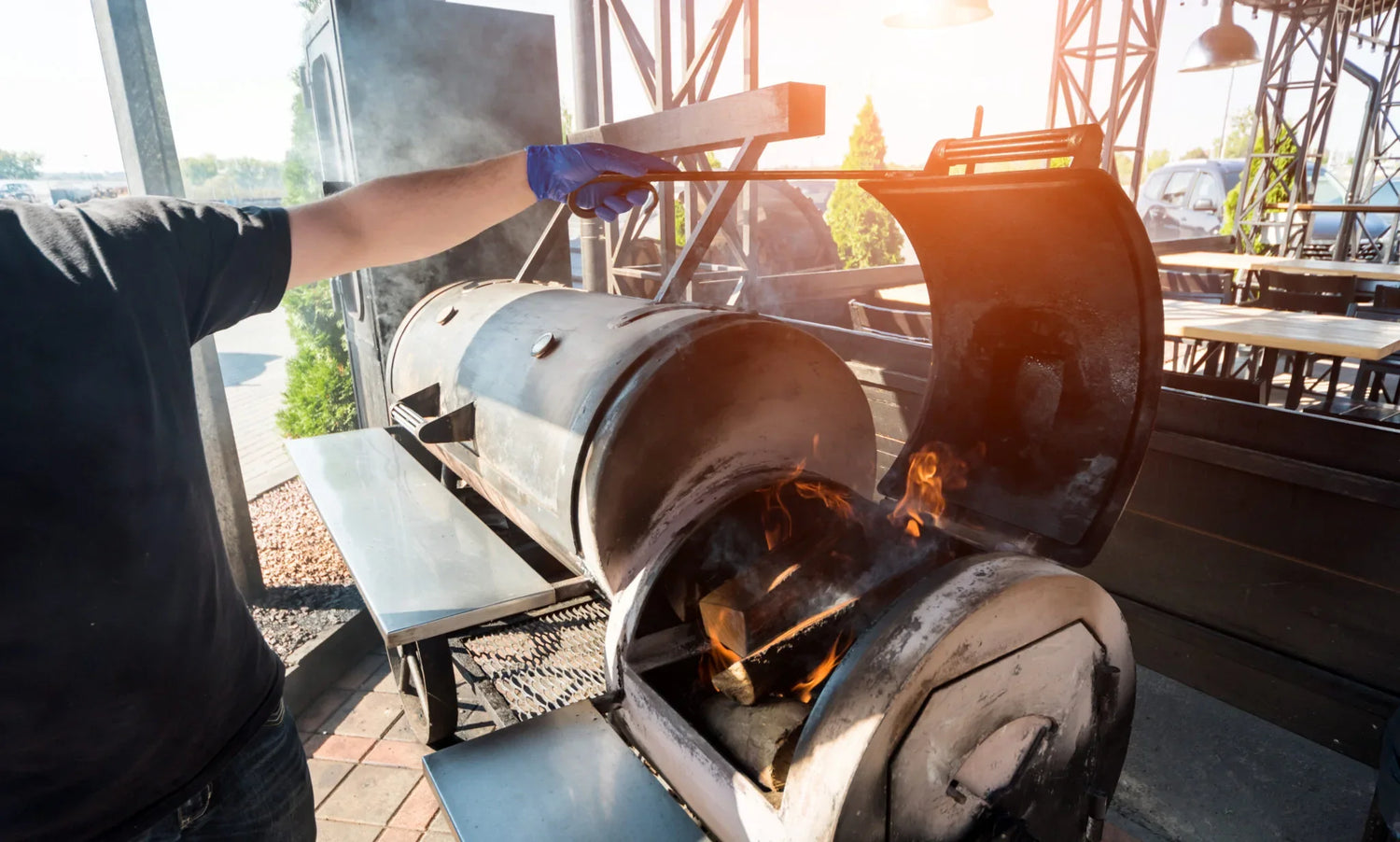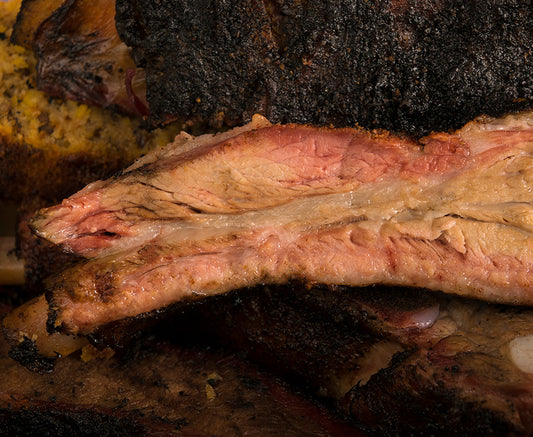Two of the main types of smokers on the market are offset smokers and electric food smokers, and each type has pros and cons. But buying your own smoker can be a big investment—not only financially, but in terms of effort and time. You’ll need to consider some variables before you buy. If you’re unsure whether an electric smoker or an offset smoker is better, hopefully, this comparison between the two will help make your decision a little easier.
TEMPERATURE CONTROL IN AN ELECTRIC VS AN OFFSET SMOKER
Temperature is a crucial variable when it comes to smoking meat. Factors ranging from the amount of smoke imparted to the food to getting the correct doneness all relate to temperature control.
Electric food smokers are equipped with thermostats and other devices capable of regulating the temperature inside the unit. These will allow you to set the desired temperature and wait for it to be reached, and the electric components also work to keep the same temperature throughout the cooking process. This helps ensure that your meat is not overcooked or undercooked. Most electric smokers give you complete control over the heat and smoke produced by the unit.
Offset smokers do not provide precise temperature control, which depends on wood management. Cooking meat properly in an offset smoker depends on the operator’s experience and knowledge about smoking and requires hands-on involvement. You’ll have to adjust the vents on the smoker constantly and tend to the amount of wood burning to maintain the ideal cooking temperature. This can take a lot of time and effort.
It also takes longer to heat the offset smoker to the desired temperature. You’ll need to plan ahead and factor that into your preparations.
ELECTRIC VS OFFSET WOOD MANAGEMENT
Wood is the source of smoke for both electric and offset food smokers; it is also the source of heat for the offset smoker but not for the electric smoker. The most significant difference between an offset and an electric smoker lies in how wood is fed to the smoker, especially when you cook for long hours as you would for smoked beef brisket or the best pulled pork.
When using an offset smoker, you’ll need to cut and store wood for your cooking (or spend a bit more to purchase it the way you want it) and then start a fire and take care of it to make sure you’ve reached the right temperature and desired amount of smoke. You’ll need to monitor how it changes to avoid ruining your preparation.
Electric smokers offer a substantial advantage over offset smokers in wood management, as the wood in an electric smoker will work only to generate the smoke and not the heat. This way, you can enjoy the convenience of an automatic wood feeder or make fewer visits to the smoker to refuel the wood.
WHICH IS MORE PORTABLE—AN OFFSET OR AN ELECTRIC SMOKER?
Electric smokers are much smaller and lighter than offset smokers and can be easily transported from one place to another. This makes them an excellent choice for pitmasters who want to move their smoker around easily. The flexibility of using your smoker at home and then bringing it over to a friend’s house for another special occasion means you’re more likely to get your money’s worth than you would using a stationary smoker.
Offset smokers, by contrast, are large, bulky, and difficult to move around. They are best suited to those with a lot of space for setting up the smoker in one location or for people who take the extra time and money to set one up on a trailer to pull behind a truck. This is perfect for those who love smoking meat in the privacy of their own home and want the meat smoker to be part of their long-term smoking journey.

ELECTRIC VS OFFSET SMOKER CAPACITY
Electric food smokers are available in different sizes, and most models allow you to smoke between 30 and 100 pounds of meat at once, depending on their exact capacity. An electric smoker is ready-made to prepare food at a small-crowd capacity and requires only minimal extra planning if you want to cook smaller items for hundreds of people (as this involves rack space), when you want to smoke multiple items at once, or if you plan to smoke large items such as a whole hog.
Offset smokers are much larger and can accommodate more meat than electric smokers. They typically have a capacity of between 250 pounds and 500 pounds of meat. This is ideal for those who want to simultaneously smoke large quantities of meat.
WHICH IS MORE EXPENSIVE—AN OFFSET OR AN ELECTRIC SMOKER?
Electric smokers are generally more expensive versus the cost of offset smokers, but the additional cost of an electric smoker is well worth the investment. Electric smokers are much easier to maintain, offer separation of smoke and heat (necessary for specific types of smoking), allow you to fine-tune your smoking temperature via the included thermostat, and they’re much more portable. Electric smokers also come with good insulation that not only plays a fundamental role in temperature maintenance, but can help prevent burns if you accidentally touch the smoker during use. When considering an electric smoker, it’s essential to look at the cost/benefit analysis and consider these and other factors.

IS AN ELECTRIC OR AN OFFSET SMOKER EASIER TO USE?
Electric smokers are very easy to use since all you have to do is set the desired temperature and timer and let the smoker do its job. There is no need to constantly adjust the vents on the smoker to keep the temperature at a specific level. Offset smokers, by contrast, can be more complex and hands-on to use than electric smokers. You must adjust the vents constantly to maintain the right temperature, and you have less control over the final product since it all depends on how long you smoke your meat.
ELECTRIC VS OFFSET SMOKINESS
Some insist electric smokers produce less smokiness than offset smokers, but that can be a good or bad thing depending on your preference; electric smokers still release enough smoke to impart great taste. By contrast, an offset is not as airtight, and you lose lots of the smoke produced. If you’re an experienced smoker with a nuanced understanding of how to control the smoke, an offset smoker would work just fine, but if you don’t want to ‘babysit’ the wood and fire, you’ll probably prefer an electric smoker.
EASE OF CLEANING AN ELECTRIC VS AN OFFSET SMOKER
Electric smokers are the easiest smokers to clean. All you have to do is wipe down the interior and exterior with a damp cloth. When it comes to the racks, we suggest lining them with our reusable, dishwasher-friendly Magic Mats or foil for easy cleanup—without them you may need to do some scrubbing. Offset smokers are more difficult to clean than electric smokers. The smoker's interior needs to be scrubbed with soap and water, and all parts must be dried thoroughly to prevent rust.
ELECTRIC VS OFFSET SMOKERS: KNOW THE DIFFERENCES BEFORE YOU BUY
Smoking is one of the most popular ways of cooking, and when you do it well, you’ll reap the benefits of flavorful and tender meat. From pitmasters with decades of experience to casual backyard cooks, people who enjoy smoking meat can do so in a variety of circumstances. So which is better, an electric or an offset smoker? If you’re looking for a smoker that is easy to use and can maintain temperature, then an electric smoker is the best option. Suppose you are an experienced meat smoker with the time to manage it, or you’re looking for a smoker that can accommodate a considerable quantity of meat. In that case, an offset smoker is probably the right choice for you. Whichever smoker you buy, research first to know exactly what to expect from it.
WANT TO LEARN MORE ABOUT FOOD SMOKING?
Consult our Ultimate Smoking Guide to learn everything you need to know about the types of wood to smoke, how to pair every type of wood with your recipes, and more.
For more great ideas, check out our Food Smoking Blog for everything from unexpected smoker recipes to smoking tips & tricks, including a guide to cooking times and internal temperatures.






